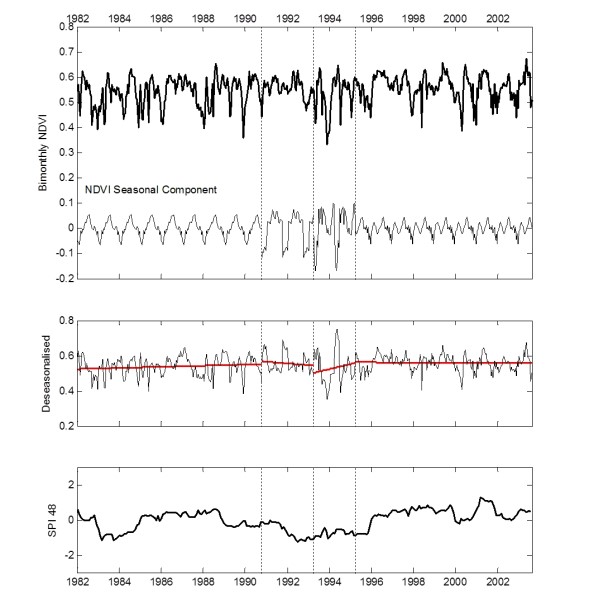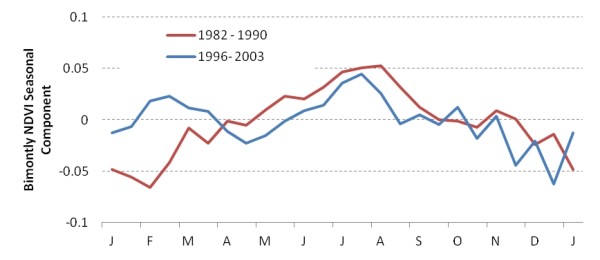| Authors: | Tsanis, I. K. and Daliakopoulos, I. N. |
| Editor: | Jane Brandt |
| Source document: | Daliakopoulos, I. and Tsanis, I. (eds) 2014. Drivers of change in the study sites. CASCADE Project Deliverable 2.2. CASCADE Report 06. 59 pp. |
According to the NDIV analysis for the Várzea Study Site, during the periods 1982-1990 and 1996-2003, trends appear moderate. On the other hand, during 1991-1995 greenness shows two consecutive breaks that coincide with the onset and end of a prolonged drought event (SPI48 in the figure above). Following this event, the trend of the deseasonalised component of the NDVI regains its stability, whereas the seasonal component experiences a reduction in amplitude.
A closer look at the NDVI seasonality before and after the 1991-1995 drought period reveals a pronounced variation at the onset of greenness that also appears about 1 month earlier (February versus March). The variation in the greenness peak is less pronounced but the one-month offset remains (July versus August). Deciduous forests display an earlier onset of greenness compared to evergreen forests. The early onset could also show signs of annuals that disappear with warmer weather (May to June). Nevertheless, the area appears to be green for a longer period. These observations may signify a phenological change in the Várzea forest. Projected changes in the climatic regime, combined with the current management approaches will pose an extra risk at the already stressed status of the original Várzea pine forest.


Note: For an overview of the historical drivers of change and their analysis in all study sites see »Drivers of change in the study sites.
